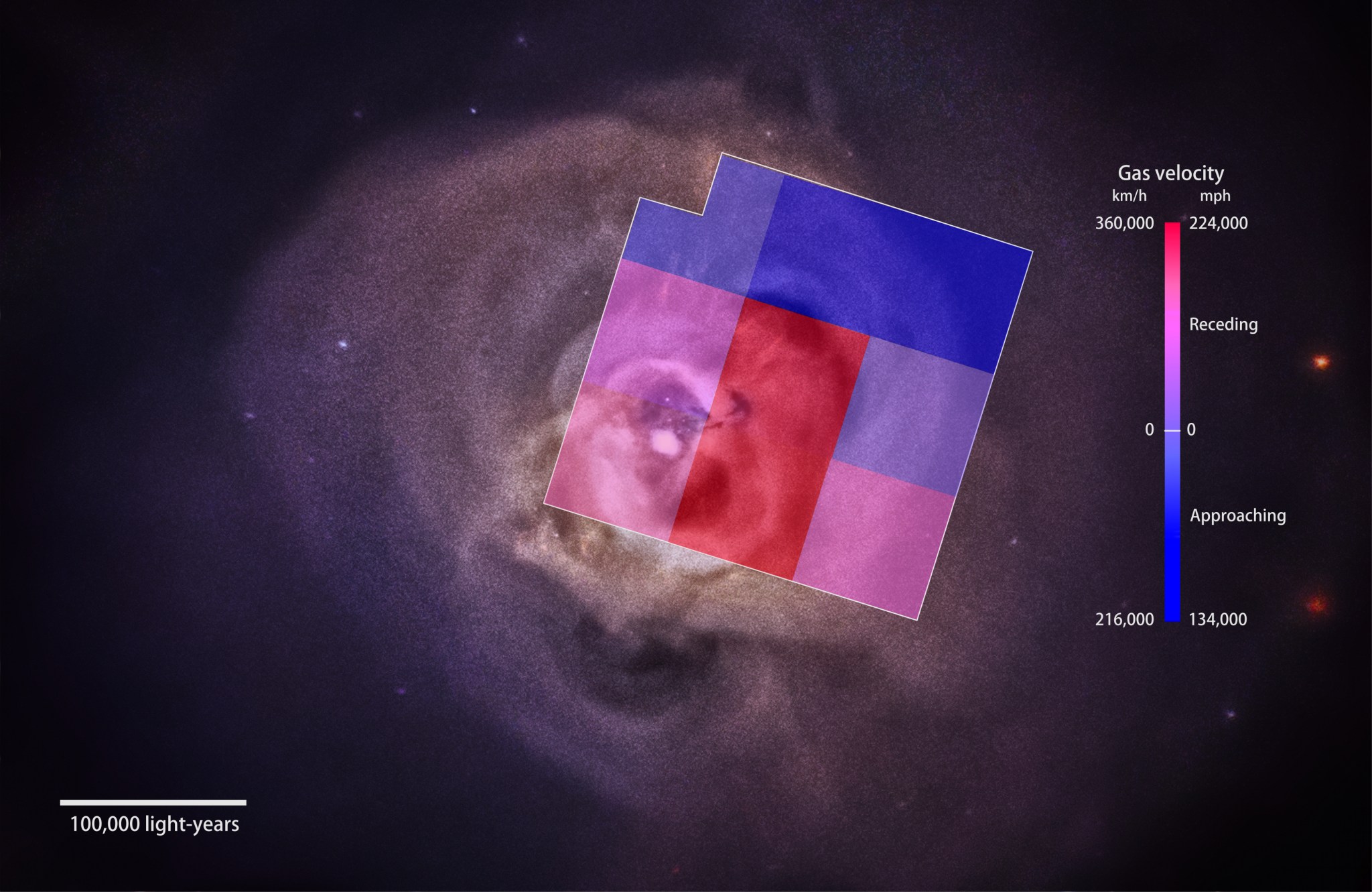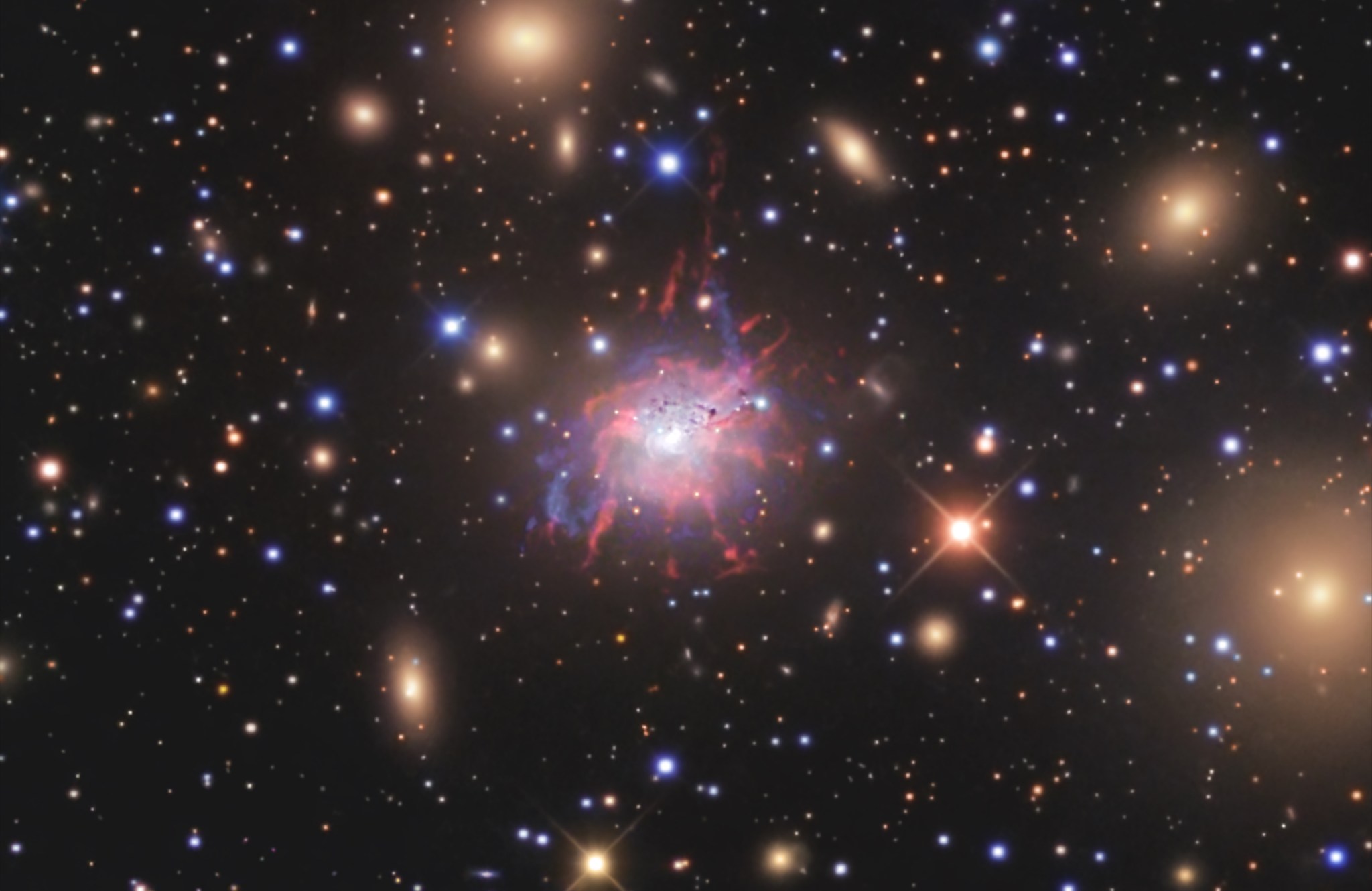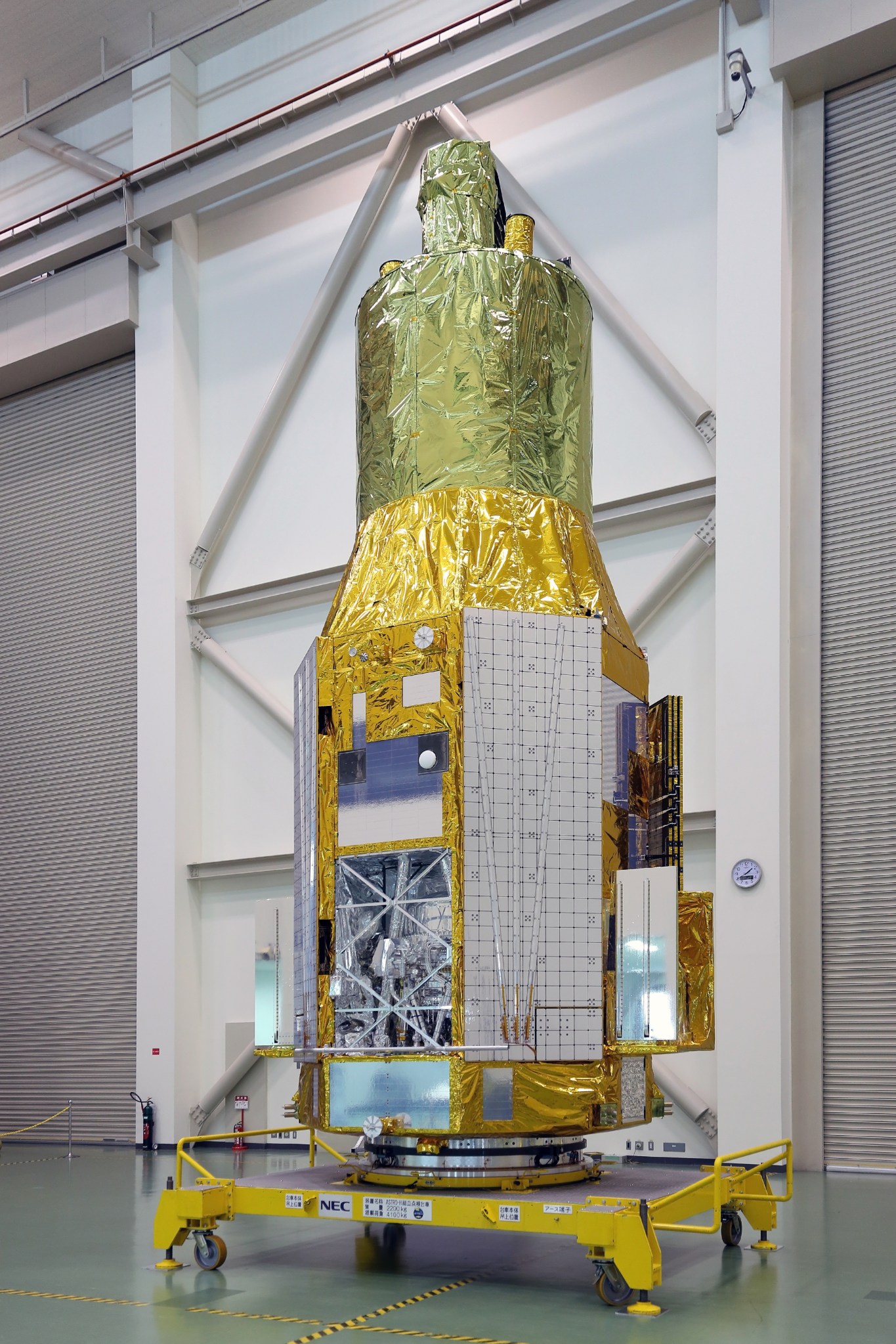Measurements of unprecedented detail returned by Japan’s Hitomi satellite have allowed scientists to track the motion of X-ray-emitting gas at the heart of the Perseus cluster of galaxies for the first time. The results showcase the long-awaited premiere of a next-generation X-ray instrument whose key components were developed at NASA’s Goddard Space Flight Center in Greenbelt, Maryland.
Led by the Japan Aerospace Exploration Agency (JAXA), Hitomi was launched on Feb. 17. Following the successful activation of the observatory and instruments, Hitomi suffered a mission-ending spacecraft anomaly on March 26.
Before its demise, though, Hitomi was able to peer into the Perseus cluster of galaxies, an assemblage of thousands of galaxies bound together by gravity. Located about 240 million light-years away and named for its host constellation, the Perseus galaxy cluster contains a vast amount of extremely hot gas. At temperatures averaging 90 million degrees Fahrenheit (50 million degrees Celsius), the gas glows brightly in X-rays. Prior to Hitomi’s launch, astronomers lacked the capability to measure the detailed dynamics of this gas, particularly its relationship to bubbles of gas expelled by an active supermassive black hole in the cluster’s core galaxy, NGC 1275.
“For the first time, we have mapped the motion of the X-ray-emitting gas in a cluster of galaxies and determined its velocity structure over a wide range of spatial scales,” said Goddard’s Richard Kelley, the U.S. principal investigator for the Hitomi collaboration. “Although this gas is continually stirred by fast outflows from the central black hole, its velocities are small on astronomical scales and show evidence for only minor levels of turbulence.”

Hitomi’s revolutionary Soft X-ray Spectrometer (SXS), developed and built by Goddard scientists working closely with colleagues from several institutions in the United States, Japan, and the Netherlands, spent more than two and a half days observing a wide area in the cluster’s core. The resulting X-ray spectrum, which provides 30 times the detail of the best previous observation, unveiled a rich landscape of X-ray emission lines from iron, nickel, chromium, and manganese — metals forged in billions of massive stars in the cluster’s galaxies and dispersed when they exploded as supernovae.
The SXS studied a square patch of the sky measuring about 195,000 light-years on a side at the cluster’s distance. The total range of gas velocities directed toward or away from Earth within this square was found to be about 365,000 miles an hour (590,000 kilometers per hour) — enormous by human standards but surprisingly modest on cosmic scales. The observed velocity range indicates that turbulence is responsible for only about 4 percent of the total gas pressure. This result is of particular interest to astrophysicists. Turbulent pressure was a previously unmeasured quantity that could significantly impact estimates of the cluster’s mass. The SXS measurements show that only minor corrections are needed.
“I’m surprised the hot gas is absorbing the power output of the black hole so quickly, so efficiently. The gas is relatively stable and isn’t getting pushed around as much as we thought,” said team member Brian McNamara, a professor of physics and astronomy at the University of Waterloo in Ontario. “Hitomi’s Perseus observation tells us that we can probably weigh distant galaxy clusters to greater accuracy than we can weigh our own Milky Way galaxy.”

A paper from the Hitomi collaboration details these findings in the July 7 edition of the journal Nature.
To determine motion at cosmic scales, astronomers typically disperse light into a rainbow-like spectrum. Discrete bright or dark lines in the spectrum correspond to wavelengths characteristically emitted or absorbed by specific chemical elements. For gas moving away from or toward Earth, these lines will be displaced toward the red or blue end of the spectrum, respectively, by an amount depending on the gas speed. Gas motion may also blur or broaden these lines, providing another clue to the cluster’s environment.
Hitomi’s SXS employed a revolutionary approach for measuring X-ray “colors” called microcalorimetry. The technique produces unprecedented spectral resolution without blurring the spectrum when looking at sources occupying a relatively large part of the sky, which occurs with traditional methods. The SXS microcalorimeter measured heat produced when individual particles of light, called photons, struck the detector. This resulted in a tiny temperature increase that precisely determined the energy of the incident X-ray light.
During the SXS check-out phase, a door in its line of sight remained closed to protect the microcalorimeter from potential contaminants as materials aboard the spacecraft emitted residual gas into the vacuum of space. This door was designed to transmit X-rays at a reduced level, but it necessarily absorbed some lower-energy X-rays before they could reach the detector.
“The SXS, a technological marvel, worked spectacularly well, exceeding its performance goal despite being partially obstructed,” said co-author Robert Petre, chief of Goddard’s X-ray Astrophysics Laboratory and the U.S. project scientist for Hitomi.
The Perseus observation provides a tantalizing glimpse of the tremendous advance that X-ray microcalorimetry will bring to astrophysics. U.S. researchers pioneered development of the technology in the 1980s, but Hitomi’s all-too-brief run represents its most successful space application to date.
“This is the first time we’ve looked at a galaxy cluster with an instrument capable of resolving the components of various atomic emission lines, and we immediately saw contradictions with current models,” said team member Maxim Markevitch at Goddard. “This is a long-awaited tool for diagnosing the conditions in cosmic plasmas that we can finally apply to galaxy clusters, and there will be a number of papers to come based on these data.”
Hitomi, which translates to “pupil of the eye,” was known before launch as ASTRO-H. The mission was developed by the Institute of Space and Astronautical Science, a division of JAXA. It was built jointly by an international collaboration led by JAXA, with contributions from NASA Goddard and other institutions in the U.S., Japan, Canada and Europe.
Download additional visuals at NASA’s Scientific Visualization Studio
By Francis Reddy
NASA’s Goddard Space Flight Center, Greenbelt, Md.



























